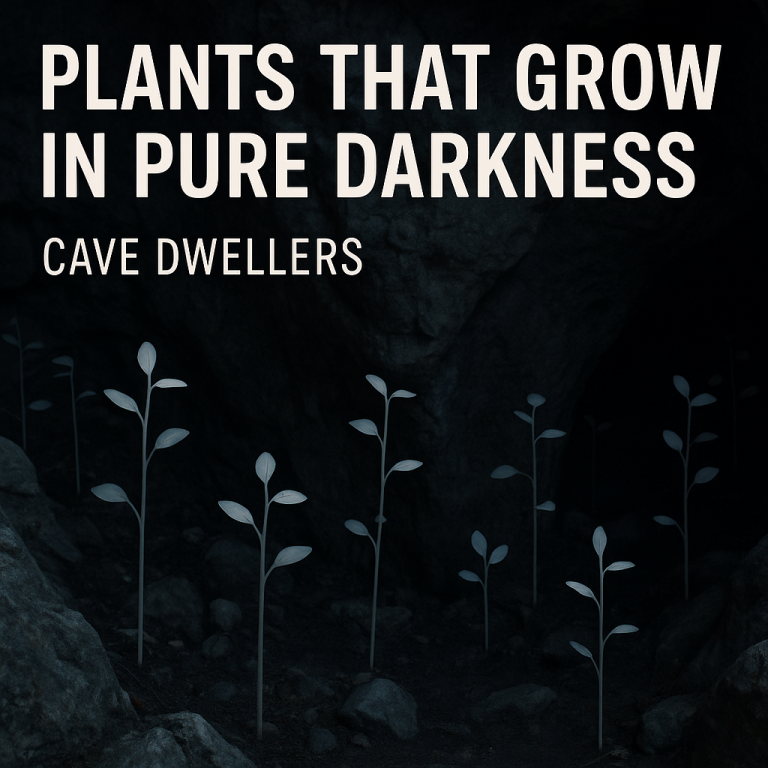In the plant world, most species fight relentlessly to survive—but a mysterious group of grasses does the opposite. Known as “suicide grasses” or annual grasses, these plants grow, reproduce, and die all within a single season, sacrificing themselves to ensure their offspring survive.
This extreme survival strategy, called monocarpy, is rare among perennials but common in annual grasses. From desert dunes to roadside verges, these ephemeral plants play crucial ecological roles while challenging our understanding of plant intelligence.
This article explores:
✔ Why some grasses “choose” to die after flowering
✔ The most fascinating suicide grass species
✔ Their ecological importance
✔ How farmers and scientists are harnessing their power
What Are Suicide Grasses?
Suicide grasses are annual plants that complete their entire life cycle—germination, growth, reproduction, and death—in one growing season. Unlike perennial grasses that regrow yearly, these species:
-
Invest all energy into one explosive reproduction event
-
Produce massive seed loads (up to 1 million seeds per plant)
-
Die immediately after seeding
Key Examples:
| Grass Species | Habitat | Lifespan | Seed Output |
|---|---|---|---|
| Barley (Hordeum vulgare) | Cultivated fields | 3-4 months | 50-100 seeds/spike |
| Foxtail (Setaria spp.) | Roadsides, wastelands | 2-3 months | 5,000+ seeds/plant |
| Sand Ryegrass (Leymus arenarius) | Coastal dunes | 4-6 months | 10,000+ seeds |
| Barnyard Grass (Echinochloa crus-galli) | Rice paddies | 6-8 weeks | 40,000 seeds |
Why Do Grasses “Commit Suicide”? The Science Behind Monocarpy
This extreme strategy evolved as an adaptation to:
1. Unpredictable Environments
-
In deserts or floodplains, conditions may only support growth briefly.
-
Dying after seeding ensures next-generation survival during favorable periods.
2. Energy Efficiency
-
Perennials waste energy on roots/stem maintenance.
-
Annuals redirect 100% of resources to seeds.
3. Avoiding Competition
-
Parent plants die to reduce shade/soil nutrient competition for offspring.
4. Drought/Fire Survival
-
Seeds survive harsh conditions; adult plants don’t need to.
Ecological Superpowers of Suicide Grasses
Despite their short lives, these grasses are ecosystem engineers:
1. Soil Stabilization
-
Sand ryegrass roots hold dunes together, preventing erosion.
2. Pioneer Species
-
Foxtail grasses colonize disturbed soils first, enriching land for other plants.
3. Wildlife Support
-
Seeds feed birds, rodents, and insects.
-
Dead stems create insect habitats.
4. Carbon Capture
-
Fast growth locks CO₂ quickly before death.
Farmers’ Love-Hate Relationship
Benefits:
✔ Barley and wheat (cultivated annuals) feed billions.
✔ Cover crops like annual ryegrass prevent erosion between plantings.
Problems:
❌ Barnyard grass reduces rice yields by 30%.
❌ Invasive annuals (e.g., cheatgrass) fuel wildfires.
Scientific Breakthroughs Inspired by Suicide Grasses
1. Drought-Resistant Crops
-
Researchers study wild annual grasses to engineer hardier wheat/barley.
2. “Self-Destructing” Biofuels
-
Fast-growing annuals like switchgrass are ideal renewable energy sources.
3. Space Farming Potential
-
Their quick lifecycle makes them ideal for Martian agriculture.
Where to See Suicide Grasses
1. Death Valley, USA
-
Desert annuals bloom explosively after rare rains.
2. Mongolian Steppes
-
Native Stipa grasses dominate these short-lived ecosystems.
3. European Coastal Dunes
-
Sand ryegrass stabilizes shifting sands.
Conservation Concerns
Some annual grasses are disappearing due to:
-
Habitat loss (conversion to farmland)
-
Climate change altering seasonal rains they depend on
Conclusion: Death as a Life Strategy
Suicide grasses prove that sometimes, dying is the ultimate survival tactic. Their brief but brilliant lives remind us that in nature, timing is everything—and that even the humblest grasses hold evolutionary wisdom we’re only beginning to understand.




Leave a Comment